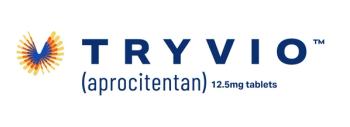
FDA Panel Votes for Entresto Use in Hard-to-Treat Heart Failure
The panel supports an expanded indication but struggles to reach consensus on what an expanded label might look like.
A U.S. Food and Drug Administration (FDA) panel
Entresto (sacubitril/valsartan), already approved for patients with heart failure with reduced ejection fraction (HFrEF), could become the first drug approved to treat heart failure with preserved ejection fraction (HFpEF), following Tuesday’s 12-1 vote from the FDA Cardiovascular and Renal Drugs Advisory Committee.
An FDA staff recommendation, and the positive committee vote, came despite trial results that fell short of reaching statistical significance. But Novartis pointed to effectiveness within certain groups of patients, including women, as well as other study results.
Heart failure is a debilitating and costly condition that causes high mortality and frequent hospitalization, creating a significant area of unmet need. The FDA is expected to make a decision on the supplemental New Drug Application (sNDA) in the first quarter of 2021, although Tuesday’s discussion left many details up to regulators.
The panel debate highlighted the inadequacy of definitions of “reduced” and “preserved” left ventricle ejection fraction (LVEF), which describe how much blood is pumped with each contraction. If there was a consensus, it was that HFpEF is an imprecise term, and that LVEF above 40% but below 57% may constitute its own range.
By the end of the hearing, the FDA’s Norman Stockbridge, M.D., Ph.D., director of the Office of Cardiology, Hematology, Endocrinology and Nephrology, said that coming up with a meaningful label may require coming up with a different way of describing “the heart failure spectrum.”
Panelists discussed whether ejection fraction, which describes how much blood the left ventricle pumps with each contraction, is an inadequate measure of heart failure or whether the FDA should look instead to standards outlined by the American Society of Echocardiography. Panelist Steven Nissen, M.D., of Cleveland Clinic, discussed a label that would include reducing heart failure hospitalization.
Cynthia Chauhan, M.S.W., the panel’s consumer representative, called for a new trial that would have greater representation of minorities and patients with common comorbidities. But Novartis’ David Soergel, Global Head of Cardiovascular, Renal and Metabolic Drug Development, said the need for diversity is recognized within the company and across the industry.
Entresto was first approved by the
Both the FDA staff and the panel weighed the fact that results from the phase 3
Results from PARAGON-HF submitted to support Novartis’ sNDA demonstrated a rate ratio (RR) of 0.87 (95% CI, 0.75-1.01; 1-sided P = .029; 2-sided P = .06). The prespecified threshold for 1-sided P had been P <.024 in order for the null hypothesis to be rejected. So, Novartis
Novartis also
“Managing HFpEF has historically been a clinical and scientific challenge due to the heterogeneity of the condition,” said Scott Solomon, M.D., professor of medicine at Harvard Medical School and Brigham and Women's Hospital, and PARAGON-HF executive committee co-chair, said in a statement. “Today’s vote represents much needed progress in this area of unmet need and is a positive step toward bringing a potential therapy to millions of patients suffering from this type of heart failure.”
Novartis is studying Entresto for another indication in the phase 3 PARAGLIDE-HF trial. This trial looks at whether the drug works in HFpEF in patients with acute decompensated heart failure after stabilization during hospitalization; the drug is started during the hospital stay or within 30 days after discharge. This is important for managed care, given the rise of reimbursement incentives that are tied to 30-day readmission rates for heart failure hospitalization. Trial data are expected in the first quarter of 2022.
Newsletter
Get the latest industry news, event updates, and more from Managed healthcare Executive.





















































